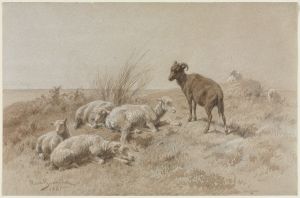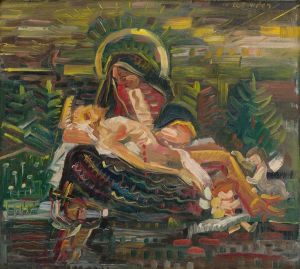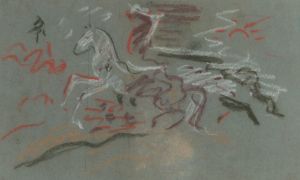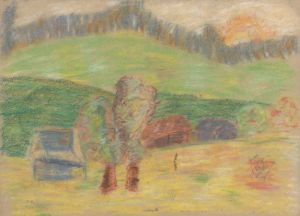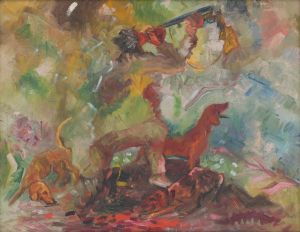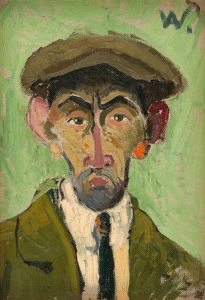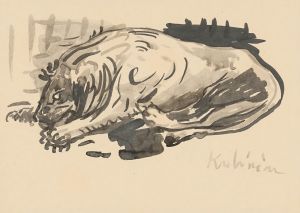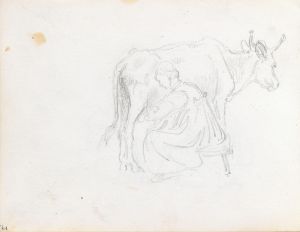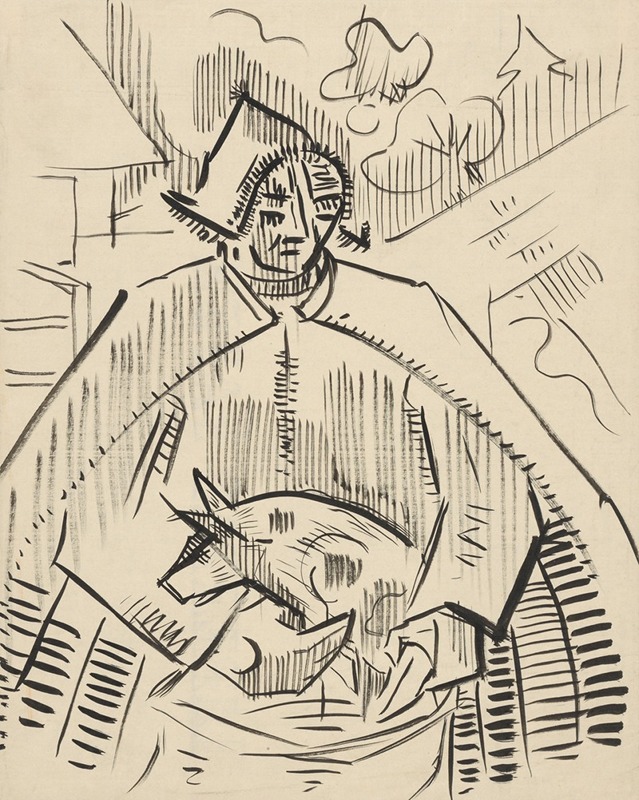
Man with a Pig
A hand-painted replica of Arnold Peter Weisz-Kubínčan’s masterpiece Man with a Pig, meticulously crafted by professional artists to capture the true essence of the original. Each piece is created with museum-quality canvas and rare mineral pigments, carefully painted by experienced artists with delicate brushstrokes and rich, layered colors to perfectly recreate the texture of the original artwork. Unlike machine-printed reproductions, this hand-painted version brings the painting to life, infused with the artist’s emotions and skill in every stroke. Whether for personal collection or home decoration, it instantly elevates the artistic atmosphere of any space.
Arnold Peter Weisz-Kubínčan was a Slovak painter known for his contributions to modern art in the early 20th century. However, specific information about a painting titled "Man with a Pig" by Weisz-Kubínčan is not readily available in historical records or art databases. Weisz-Kubínčan's work, in general, is characterized by its exploration of modernist themes and techniques, often reflecting the socio-political climate of his time.
Weisz-Kubínčan was born in 1898 in Dolný Kubín, a town in what is now Slovakia. He studied art in Budapest and later in Vienna, where he was influenced by the avant-garde movements that were prominent in Europe during the early 20th century. His work often incorporated elements of expressionism and cubism, reflecting the broader trends in European art during this period.
Throughout his career, Weisz-Kubínčan's art was deeply influenced by the tumultuous events of his time, including World War I, the interwar period, and the rise of fascism in Europe. His paintings often depicted the human condition, exploring themes of identity, alienation, and the impact of political change on individuals and communities.
Weisz-Kubínčan's life and career were tragically cut short during World War II. As a Jewish artist living in Slovakia, he was subjected to the anti-Semitic laws and persecution that swept through Europe during the Nazi occupation. In 1944, he was deported to Auschwitz concentration camp, where he perished.
Due to the scarcity of surviving works and documentation, many details about Weisz-Kubínčan's oeuvre remain unknown. His contributions to Slovak and European art, however, are recognized for their emotional depth and innovative use of form and color. His legacy is preserved through the efforts of art historians and institutions dedicated to documenting and exhibiting the works of artists affected by the Holocaust.
In the absence of specific information about "Man with a Pig," it is important to acknowledge the broader context of Weisz-Kubínčan's work and the historical circumstances that shaped his artistic vision. His paintings, though not widely known, offer valuable insights into the cultural and political landscape of early 20th-century Europe and the personal experiences of an artist navigating a world marked by conflict and change.
For those interested in exploring Weisz-Kubínčan's art, it is recommended to consult collections and exhibitions that focus on Central European modernism and the impact of World War II on artists and their work. These resources can provide a more comprehensive understanding of his contributions to the art world and the enduring significance of his creative legacy.





